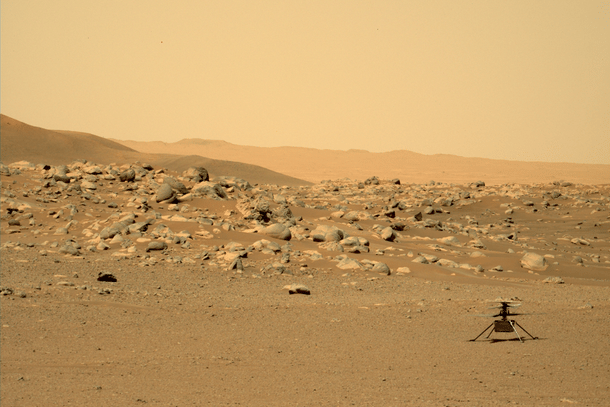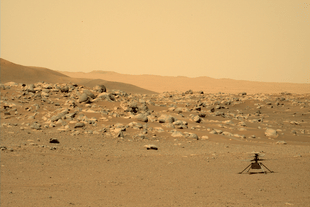Science
NASA's Ingenuity Mars Helicopter Logs Fiftieth Flight As It Nears Two-year Anniversary Of Historic First Flight
Swarajya Staff
Apr 17, 2023, 02:08 PM | Updated 02:10 PM IST
Save & read from anywhere!
Bookmark stories for easy access on any device or the Swarajya app.


On its record fiftieth flight on 13 April, the Ingenuity helicopter of the National Aeronautics and Space Administration (NASA) covered a distance of 1,057.09 feet (ft), or 322.2 metres (m), in 145.7 seconds, and set a new altitude record of nearly 59 ft (18 m) on Mars.
"Just as the Wright brothers continued their experiments well after that momentous day at Kitty Hawk in 1903, the Ingenuity team continues to pursue and learn from the flight operations of the first aircraft on another world," said Lori Glaze, director of the Planetary Science Division at NASA Headquarters in Washington.
"With Flight 50 in the mission logbook, the helicopter team plans to perform another repositioning flight before exploring the “Fall River Pass” region of Jezero Crater," NASA said.
Watch this nearly minute-long video of the achievement.
Ingenuity, carried by NASA's Perseverance rover, arrived on Mars in February 2021. Its first flight took place on 19 April that year, and will soon celebrate two years since then.
NASA said Ingenuity will face more difficult terrain and fly frequently to stay within the rover's electronic range in the coming days.
Ingenuity is light, with a weight of 1.8 kg (less than 0.7 kg on Mars), and has rotors stretching across 1.2 metres and ready to spin at about 2,400 rpm.
The blades are made of carbon fibre foam. A solar panel on board keeps the lithium-ion batteries charged.
The rotorcraft is equipped with antennas, cameras, and sensors — the antennas help in communicating with the Earth via the rover, sensors help in tracking the speed, and cameras (one colour and one black-and-white) help with sight.
It was designed as a technology demonstration that would fly no more than five times, and intended to prove powered, controlled flight on another planet.
Safe to say now, it has far exceeded expectations and "transitioned into being an operations demonstration."
NASA’s most ambitious Mars rover mission yet hopes to learn whether the Red Planet was ever home to life in the 4.6 billion (~460 crore) years of its existence.





